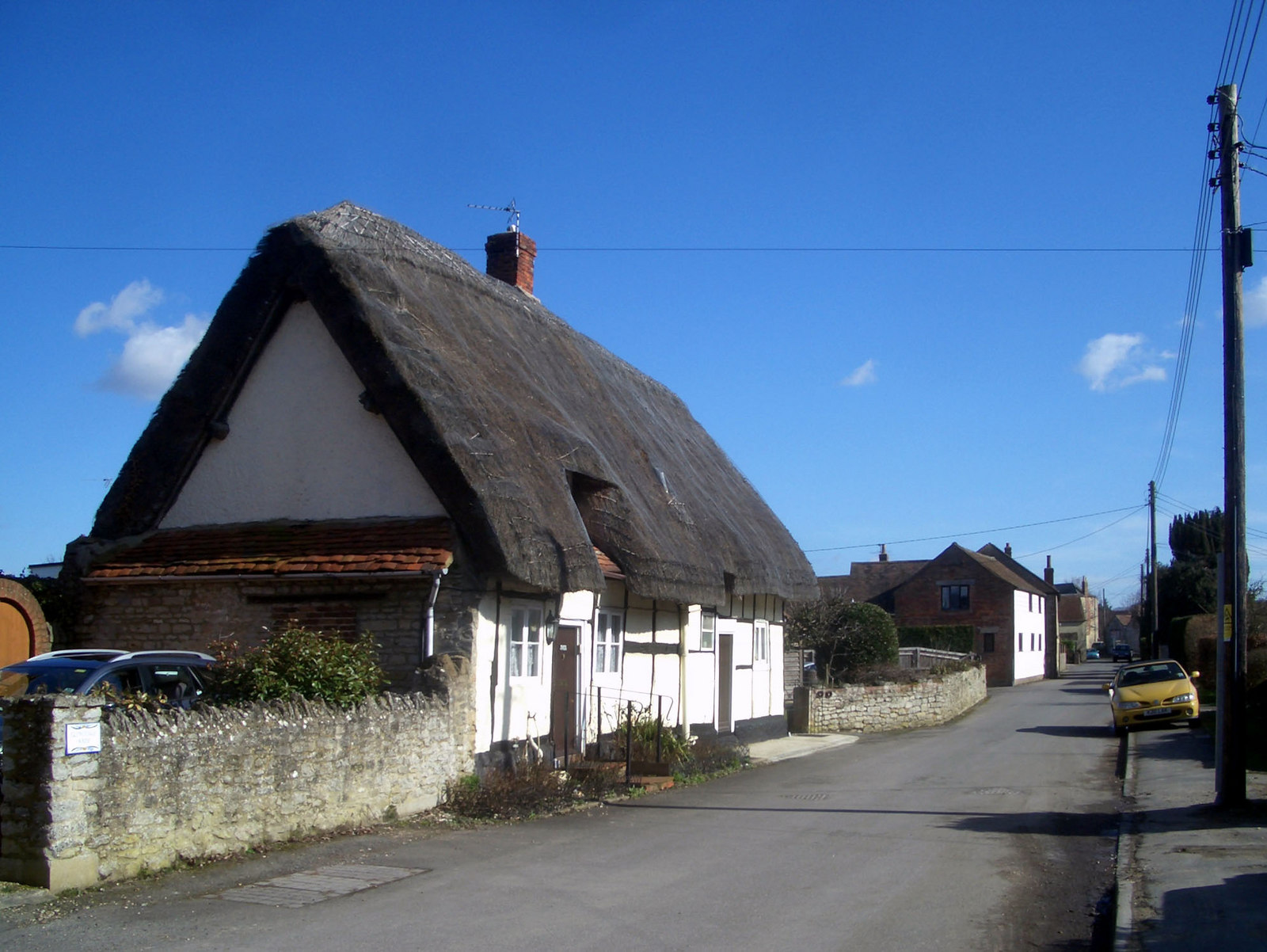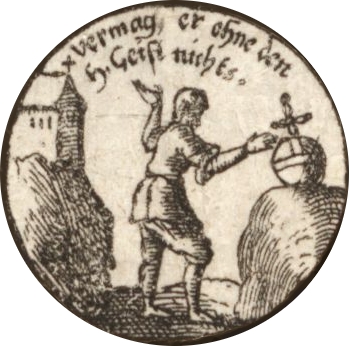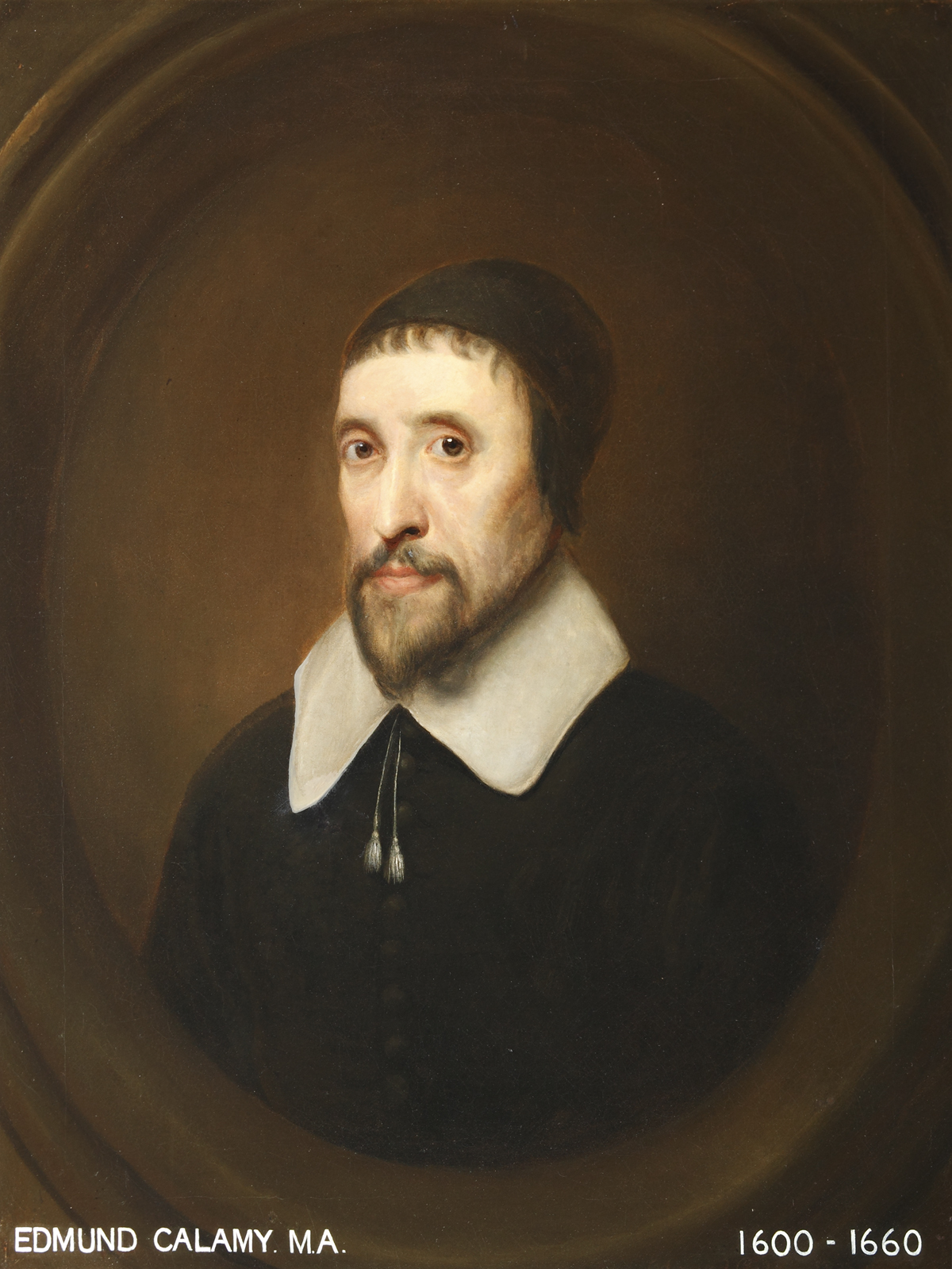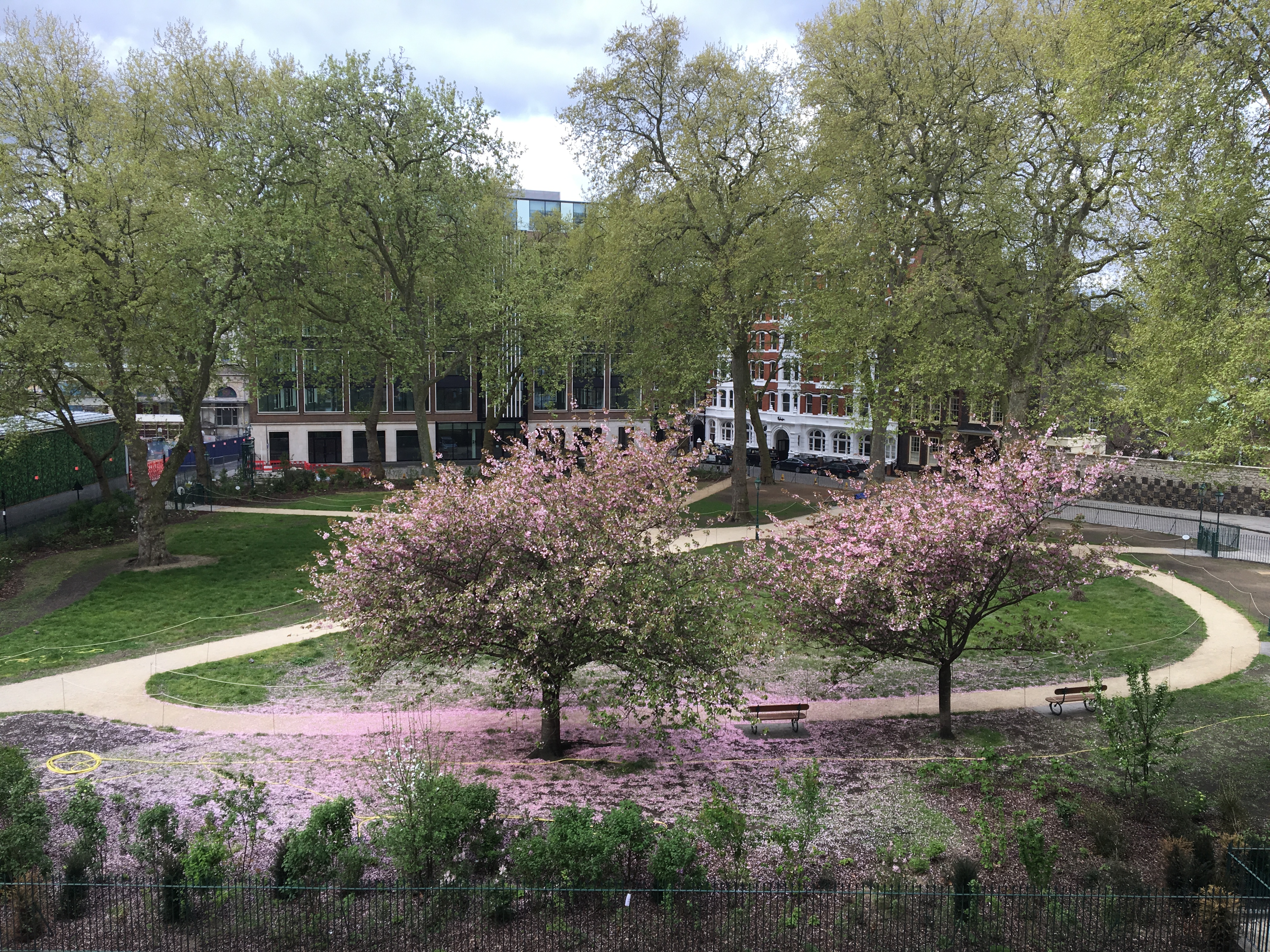|
John Owen (theologian)
John Owen (161624 August 1683) was an English Nonconformist church leader, theologian, and academic administrator at the University of Oxford. He was briefly a member of parliament for the University's constituency, sitting in the First Protectorate Parliament of 1654 to 1655. Early life Of Welsh descent, Owen was born at Stadhampton in Oxfordshire, and was educated at Queen's College, Oxford (B.A. 1632, M.A. 1635); at the time the college was noted, according to Thomas Fuller, for its metaphysicians. A Puritan by upbringing, in 1637 Owen was driven from Oxford by Laud's new statutes, and became chaplain and tutor in the family of Sir Robert Dormer and then in that of Lord Lovelace. At the outbreak of the English Civil War he sided with the parliament, and thus lost both his place and the prospects of succeeding to his Welsh Royalist uncle's fortune. For a while he lived in Charterhouse Yard, troubled by religious questions. His doubts were removed by a sermon preached ... [...More Info...] [...Related Items...] OR: [Wikipedia] [Google] [Baidu] |
Stadhampton
Stadhampton is a village and civil parish about 7 miles (11 km) southeast of Oxford in South Oxfordshire, England. Stadhampton is close to the River Thame, a tributary of the River Thames. The village was first mentioned by name in 1146, and was in the ownership of the bishops of Lincoln, the crown, and various Oxford colleges for most of subsequent history. The village includes several buildings of historical and architectural interest, including a parish church with features dating back to the 12th-century. Toponym The toponym "Stadhampton" was recorded as ''Stodeham'' in 1146 and ''Stodham'' in 1316. The name is derived from Old English, probably ''Stod-hāmm'' meaning "river meadow where horses were kept". ''Stadham'' has also been used, including colloquially to the present day, and the "ton" suffix seems to have been added relatively late in the village's history. History The Domesday Book of 1086 does not mention Stadhampton by name, but the settlement evidently formed ... [...More Info...] [...Related Items...] OR: [Wikipedia] [Google] [Baidu] |
Thomas Fuller
Thomas Fuller (baptised 19 June 1608 – 16 August 1661) was an English churchman and historian. He is now remembered for his writings, particularly his ''Worthies of England'', published in 1662, after his death. He was a prolific author, and one of the first English writers able to live by his pen (and his many patrons).Stephen, Leslie (1889). " Thomas Fuller". In ''Dictionary of National Biography''. 20. London. pp. 315-320. Early life Fuller was the eldest son of Thomas Fuller, rector of Aldwinkle St Peter's, Northamptonshire. He was born at his father's rectory and was baptised on 19 June 1608. Dr John Davenant, bishop of Salisbury, was his uncle and godfather. According to John Aubrey, Fuller was "a boy of pregnant wit". At thirteen he was admitted to Queens' College, Cambridge, then presided over by John Davenant. His cousin, Edward Davenant, was a tutor there. He did well academically; and in Lent 1624–1625 he became B.A. and in July 1628, at only 20 years of ... [...More Info...] [...Related Items...] OR: [Wikipedia] [Google] [Baidu] |
Monergism
Monergism is the view within Christian theology which holds that God works through the Holy Spirit to bring about the salvation of an individual through spiritual regeneration, regardless of the individual's cooperation. It is most often associated with Lutheranism, as well as with the Reformed tradition (such as Presbyterianism, low church Anglicanism, Puritans, Dutch Reformed Church, Reformed Baptist etc.) and its doctrine of irresistible grace, and particularly with historical doctrinal differences between Calvinism and Arminianism. This position supposedly contrasts with what is pejoratively called Arminian synergism, the belief that God and individuals cooperate to bring individuals salvation. Statement of the doctrine Monergism states that the regeneration of an individual is the work of God through the Holy Spirit alone, as opposed to Synergism, which, in its simplest form, argues that the human will cooperates with God's grace in order to be regenerated. To most ... [...More Info...] [...Related Items...] OR: [Wikipedia] [Google] [Baidu] |
Calvinism
Calvinism (also called the Reformed Tradition, Reformed Protestantism, Reformed Christianity, or simply Reformed) is a major branch of Protestantism that follows the theological tradition and forms of Christian practice set down by John Calvin and other Reformation-era theologians. It emphasizes the sovereignty of God and the authority of the Bible. Calvinists broke from the Roman Catholic Church in the 16th century. Calvinists differ from Lutherans (another major branch of the Reformation) on the spiritual real presence of Christ in the Lord's Supper, theories of worship, the purpose and meaning of baptism, and the use of God's law for believers, among other points. The label ''Calvinism'' can be misleading, because the religious tradition it denotes has always been diverse, with a wide range of influences rather than a single founder; however, almost all of them drew heavily from the writings of Augustine of Hippo twelve hundred years prior to the Reformation. T ... [...More Info...] [...Related Items...] OR: [Wikipedia] [Google] [Baidu] |
Synergism
In Christian theology, synergism is the position of those who hold that salvation involves some form of cooperation between divine grace and human freedom. Synergism is upheld by the Roman Catholic Church, Orthodox Churches, Anabaptist Churches and Methodist Churches. It is an integral part of Arminian theology common in the General Baptist and Methodist traditions. Synergism stands opposed to monergism (which rejects the idea that humans cooperate with the grace of God), a doctrine most commonly associated with the Reformed Protestant as well as Lutheran traditions, whose soteriologies have been strongly influenced by the North African bishop and Latin Church Father Augustine of Hippo (354–430). Lutheranism, however, confesses a monergist salvation but rejects the notion that anyone is predestined to hell (see ). Synergism and semipelagianism each teach some collaboration in salvation between God and humans, but semipelagian thought teaches that the beginning half of fa ... [...More Info...] [...Related Items...] OR: [Wikipedia] [Google] [Baidu] |
Arminianism
Arminianism is a branch of Protestantism based on the theological ideas of the Dutch Reformed theologian Jacobus Arminius (1560–1609) and his historic supporters known as Remonstrants. Dutch Arminianism was originally articulated in the ''Remonstrance'' (1610), a theological statement submitted to the States General of the Netherlands. This expressed an attempt to moderate the doctrines of Calvinism related to its interpretation of predestination. The Synod of Dort (1618–19) was called by the States General to consider the '' Five Articles of Remonstrance''. Classical Arminianism, to which Arminius is the main contributor, and Wesleyan Arminianism, to which John Wesley is the main contributor, are the two main schools of thought. Many Christian denominations have been influenced by Arminian views on the will of man being freed by grace prior to regeneration, notably the Baptists in 17th century, the Methodists in the 18th century, and the Pentecostals in the 20th ... [...More Info...] [...Related Items...] OR: [Wikipedia] [Google] [Baidu] |
Edmund Calamy The Elder
Edmund Calamy (February 160029 October 1666) was an English Presbyterian church leader and divine. Known as "the elder", he was the first of four generations of nonconformist ministers bearing the same name. Early life The Calamy family claimed to be of Huguenot descent. Edmund Calamy was born in the parish of St Thomas the Apostle, London, and educated at Merchant Taylors' School and then Pembroke College, Cambridge, where his opposition to Arminianism excluded him from a fellowship. Nicholas Felton, Bishop of Ely, nevertheless made him his chaplain, and gave him the living of St Mary, Swaffham Prior, which he held till 1626. He then moved to Bury St Edmunds, where he lectured for ten years; the later Congregationalist Jeremiah Burroughs was another preacher in the town. He retired when his bishop Matthew Wren insisted on the observance of certain ceremonial articles: Calamy refused to read out the '' Book of Sports'' in his church. In 1636 he was appointed rector ( ... [...More Info...] [...Related Items...] OR: [Wikipedia] [Google] [Baidu] |
St Mary Aldermanbury
St Mary Aldermanbury was a parish church in the City of London first mentioned in 1181 and destroyed by the Great Fire of London in 1666. Rebuilt in Portland stone by Christopher Wren, it was again gutted by the Blitz in 1940, leaving only the walls standing. These stones were transported to Fulton, Missouri in 1966, by the residents of that town, and rebuilt in the grounds of Westminster College as a memorial to Winston Churchill. Churchill had made his Sinews of Peace, "Iron Curtain" speech in the Westminster College Gymnasium in 1946. The footprint of the church remains at the junction of London's Aldermanbury and Love Lane, planted with bushes and trees; a memorial plaque has been placed by Westminster College in the footprint. The gardens also house a monument to Henry Condell and John Heminges, key figures in the production of the First Folio of William Shakespeare's plays and co-partners with him in the Globe Theatre. Condell and Heminges lived in the St M ... [...More Info...] [...Related Items...] OR: [Wikipedia] [Google] [Baidu] |
Charterhouse Square
Charterhouse Square is a garden square, a pentagonal space, in Farringdon, in the London Borough of Islington, and close to the former Smithfield Meat Market. The square is the largest courtyard or yard associated with the London Charterhouse, mostly formed of Tudor and Stuart architecture restored after the London Blitz. The square adjoins other buildings including a small school. It lies between Charterhouse Street, Carthusian Street and the main Charterhouse complex of buildings south of Clerkenwell Road. The complex includes a Chapel, Tudor Great Hall, Great Chamber, the Barts and The London School of Medicine and Dentistry and a 40-resident almshouse. The square roughly covers a large 14th-century plague pit, discovered by deep excavations for Crossrail near which, within the main site, the history of the Charterhouse is exhibited in a branch of the Museum of London. The southern end of the square forms the southern boundary of the London Borough of Islington, where it ... [...More Info...] [...Related Items...] OR: [Wikipedia] [Google] [Baidu] |
Cavalier
The term Cavalier () was first used by Roundheads as a term of abuse for the wealthier royalist supporters of King Charles I and his son Charles II of England during the English Civil War, the Interregnum, and the Restoration (1642 – ). It was later adopted by the Royalists themselves. Although it referred originally to political and social attitudes and behaviour, of which clothing was a very small part, it has subsequently become strongly identified with the fashionable clothing of the court at the time. Prince Rupert, commander of much of Charles I's cavalry, is often considered to be an archetypal Cavalier. Etymology Cavalier derives from the same Latin root as the Italian word and the French word (as well as the Spanish word ), the Vulgar Latin word '' caballarius'', meaning 'horseman'. Shakespeare used the word ''cavaleros'' to describe an overbearing swashbuckler or swaggering gallant in Henry IV, Part 2 (c. 1596–1599), in which Robert Shallow says "I'll dri ... [...More Info...] [...Related Items...] OR: [Wikipedia] [Google] [Baidu] |
English Civil War
The English Civil War (1642–1651) was a series of civil wars and political machinations between Parliamentarians ("Roundheads") and Royalists led by Charles I ("Cavaliers"), mainly over the manner of Kingdom of England, England's governance and issues of religious freedom. It was part of the wider Wars of the Three Kingdoms. The First English Civil War, first (1642–1646) and Second English Civil War, second (1648–1649) wars pitted the supporters of King Charles I of England, Charles I against the supporters of the Long Parliament, while the Third English Civil War, third (1649–1651) saw fighting between supporters of King Charles II of England, Charles II and supporters of the Rump Parliament. The wars also involved the Covenanters, Scottish Covenanters and Confederate Ireland, Irish Confederates. The war ended with Parliamentarian victory at the Battle of Worcester on 3 September 1651. Unlike other list of English civil wars, civil wars in England, which were mainly ... [...More Info...] [...Related Items...] OR: [Wikipedia] [Google] [Baidu] |
John Lovelace, 2nd Baron Lovelace
John Lovelace, 2nd Baron Lovelace (February 1616 – 25 November 1670) was a British peer and Royal servant. Life John was born in Hurley, Berkshire the son of Richard Lovelace, 1st Baron Lovelace and his wife, Margaret, the daughter of London merchant William Dodworth, and educated at Christ Church, Oxford. He lived at Ladye Place at Hurley which he inherited on the death of his father. Like his son the third Baron, he was a notoriously heavy drinker, and chronically in debt. He was an ardent Royalist and was committed by the Parliamentarians to the Tower of London and made to pay a heavy fine of 18,373''l''. 1''s''. 10''d''. After the restoration of the Monarchy, he was appointed Lord Lieutenant of Berkshire from 28 August 1660 to 25 November 1670. In 1670 he was made steward of the old Royal palace at Woodstock and died in the palace gatehouse on 25 September 1670. He was buried on 1 October 1670 in the old priory church in Hurley. After his death, he was succeeded by hi ... [...More Info...] [...Related Items...] OR: [Wikipedia] [Google] [Baidu] |











_School_-_John_Lovelace_(1616–1670)%2C_2nd_Baron_Lovelace_-_609049_-_National_Trust.jpg)